The Challenge
K-beauty is hot in America. However, as a skincare fanatic from Korea, I am under the strong impression that Americans are struggling to understand and take advantage of k-beauty. Case in point: I don’t recognize many of the brands that major US-based k-beauty e-commerce businesses sell. For example, on two sites that were featured on the likes of Vogue, Allure, and WSJ, I recognized less than 30% of the brands that they carry. My American friends were, of course, surprised at this fact. They maybe felt a bit deceived, too. To fill this knowledge gap, I designed a concept mobile app that helps users to navigate the k-beauty world. The product achieves the goal by 1) telling users whether a given brand/product is reputable k-beauty or not 2) showcasing to users Korea’s best skincare products and brands.
User Needs
"I definitely struggled to understand and take advantage of the k-beauty products while I was there" – a friend on her experience shopping for k-beauty in Korea
In talking to my American friends, I found that they want help finding legitimate k-beauty products and brands. Do Korean women actually use these products and brands? What are reputable k-beauty products and brands?
The App
The app has two main functionalities:
1) search function - users search for a specific product or brand and find out whether it's reputable or not.
2) discover function - lets users discover Korea's best products and brands.
It'd be nice if users could buy products they like using our app, so I decided to list links to online and offline stores for each product.
Here are the onboarding screens that explain the app's main value propositions.
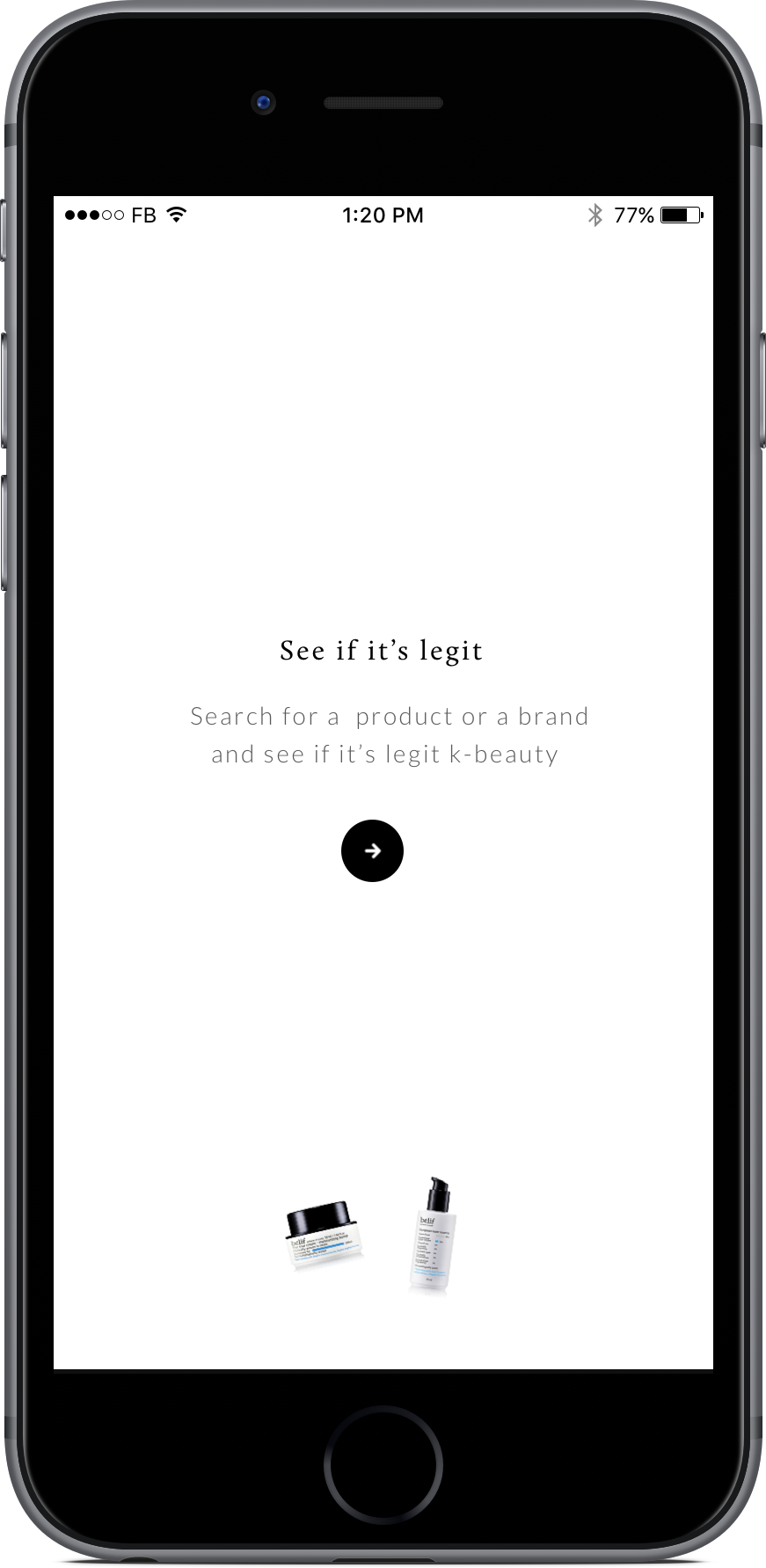

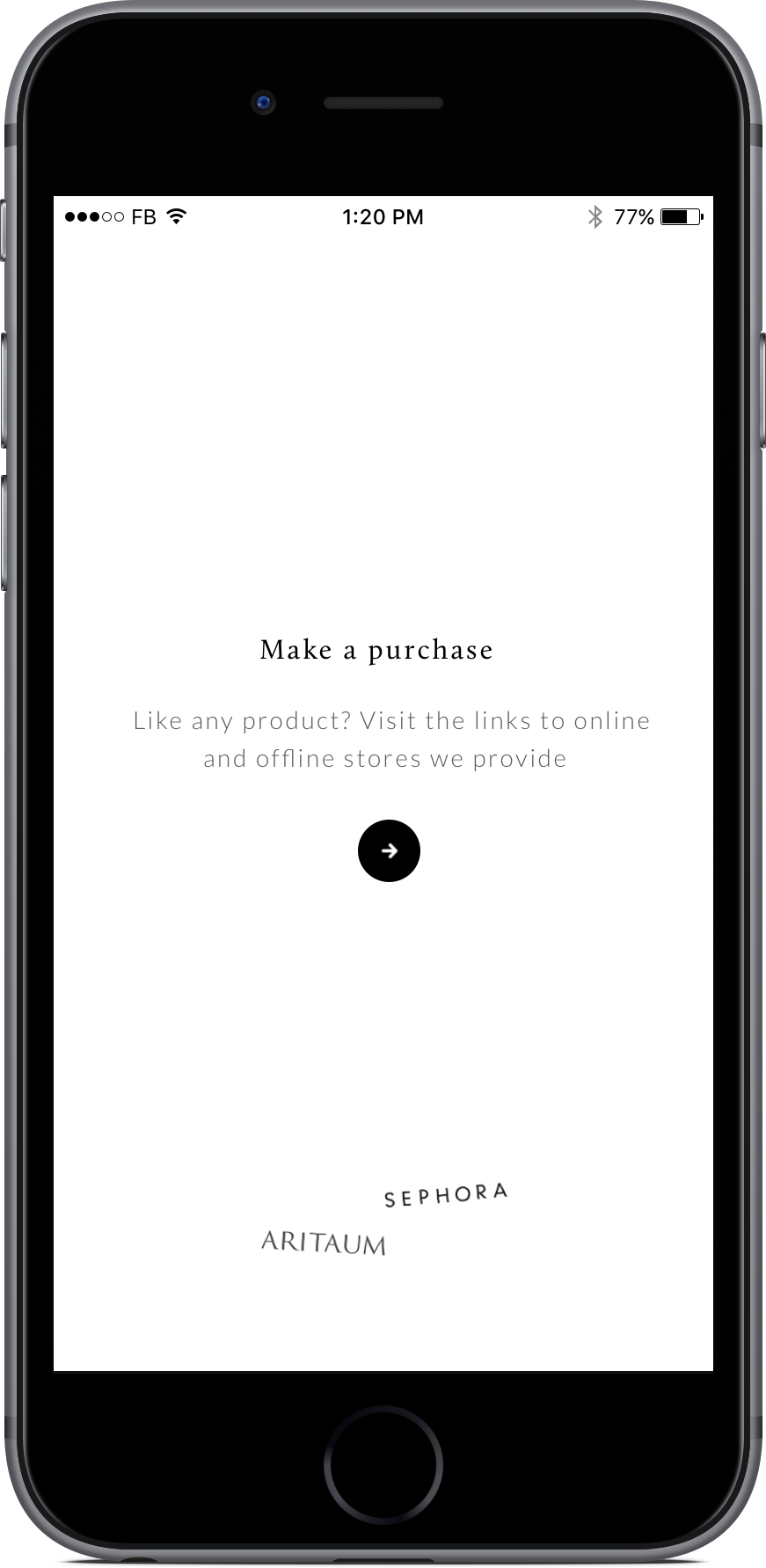
Design Process
I started the design process by sketching wireframes on paper. In designing the UX and UI, I referred to many examples by looking at existing apps and sites like pttrns and dribbble. While sketching wireframes, I also brainstormed about copy to write on each screen.
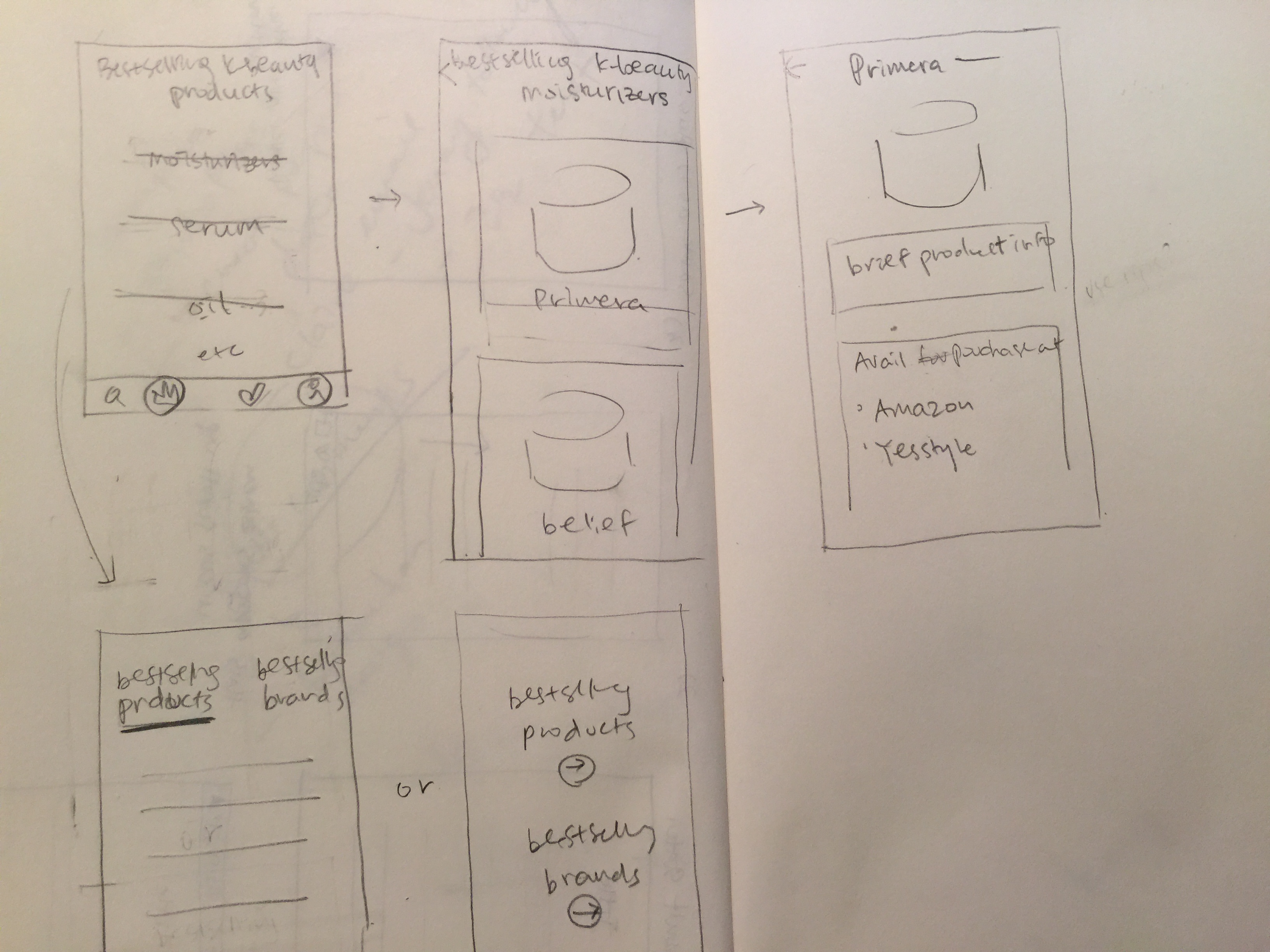

Sketches I did for key screens.
After I had wireframes ready on paper, I designed high-fidelity mockups. In this step, I was careful not to spend too much time on visual design. I planned to share mockups in the form of an interactive Invision prototype with potential users for feedback -- likely many things will change based on feedback, so I focused on bringing the UX to life instead. Here are some of the high fidelity mockups I put together to create an Invision prototype.
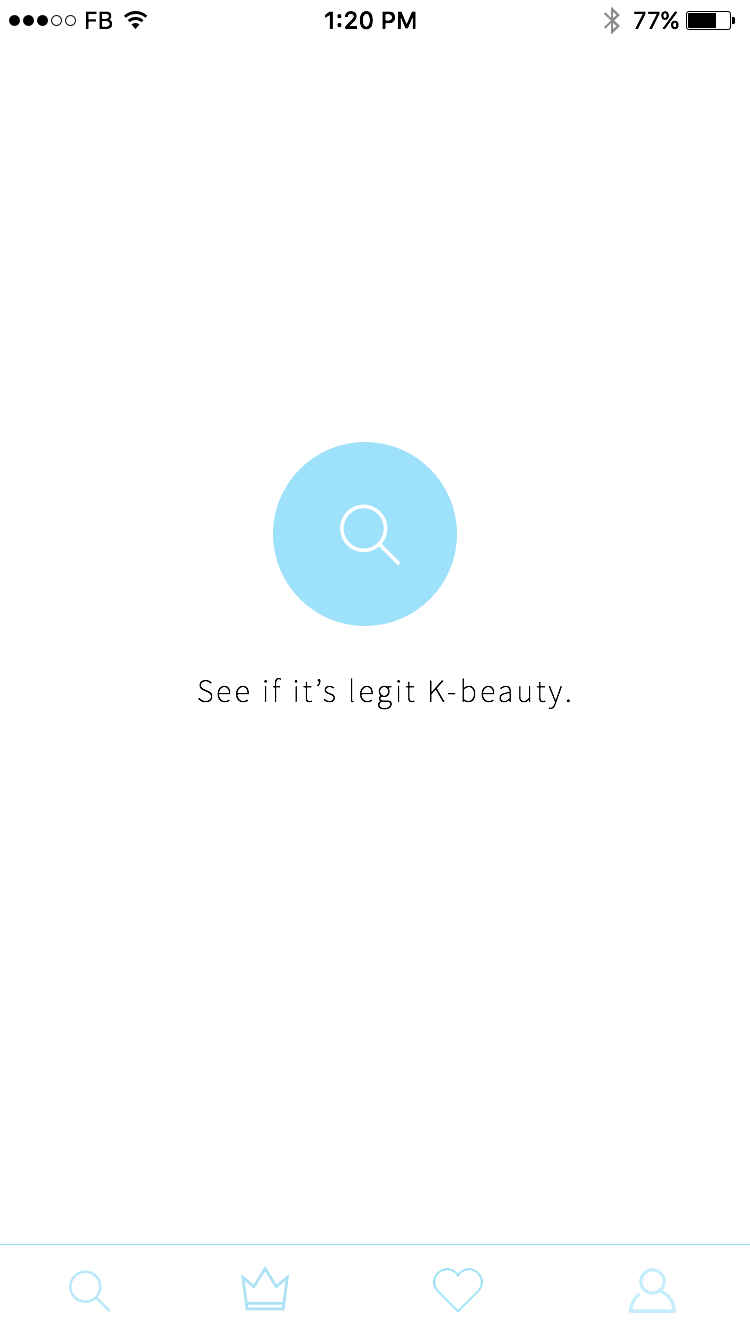



Insights from User Testing
Insight 1: Users want a different rating system
In designing the product, I had to decide what determines whether a brand or a product is reputable. I decided to have a small panel of normal Korean girls (10 or so) rate brands and products. My reasoning was that since most Korean girls are into skincare and are aware of major skincare brands and products, simply asking a small number of Korean girls would serve as an excellent measure. However, in testing with potential users, I found that they don't consider such a rating system trustworthy.
I've learned that users want to rely on the opinions of a few experts e.g. established Korean beauty personalities or many, many normal Korean women. While I still stand by the idea that a small panel of normal Korean women would do an excellent job, I decided not to interfere with users' mental models regarding what constitutes a credible rating system. So instead of employing a small panel, I decided to aggregate reviews from Korea’s major cosmetics review sites and refer to external resources such as beauty awards to give ratings. In addition, a team of k-beauty experts e.g. beauty editors at major beauty magazines will help pick out best brands.

"The idea of a panel of Korean girls [10 or so] seems like a weak signal of whether a product is reputable, and would not instill much confidence in me as a consumer."
I've learned that users want to rely on the opinions of a few experts e.g. established Korean beauty personalities or many, many normal Korean women. While I still stand by the idea that a small panel of normal Korean women would do an excellent job, I decided not to interfere with users' mental models regarding what constitutes a credible rating system. So instead of employing a small panel, I decided to aggregate reviews from Korea’s major cosmetics review sites and refer to external resources such as beauty awards to give ratings. In addition, a team of k-beauty experts e.g. beauty editors at major beauty magazines will help pick out best brands.

Insight 2: Users want to know more than whether Korean girls have or haven’t heard of it.
In my original design, when users search for a product/brand, the app simply told users whether the product/brand is known in Korea.


Search results screens from my original design
After talking to users, I’ve learned that they want to know more than whether a brand or a product is reputable. Users want customized recommendations. For example, “Road Shop” brands are popular in Korea, but they target younger demographics i.e. teenagers and girls in their early 20s. So “Road Shop” products are still reputable, but girls in their late 20s would not want those products recommended to them.
In addition, I’ve learned that users want recommendations to reflect their own needs (e.g. dry skin, acne, wrinkles). This makes sense because skincare is about catering to your own skin concerns.
Based on the insights, I iterated so that the app gives more customized recommendations.
In the new design, when users search for a product/brand, the app gives more detailed reviews so that users can find out whether the product/brand suits their own needs.
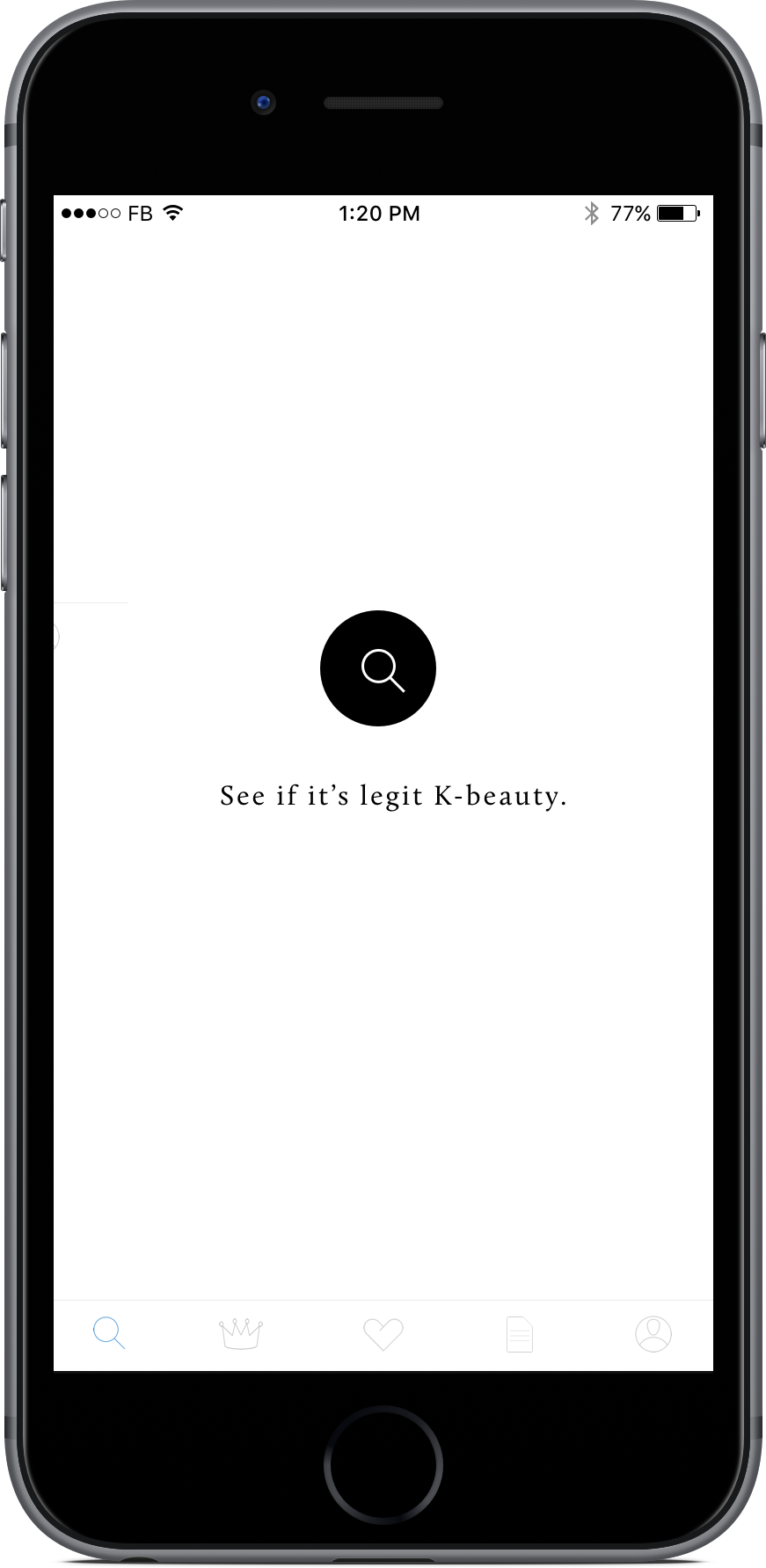

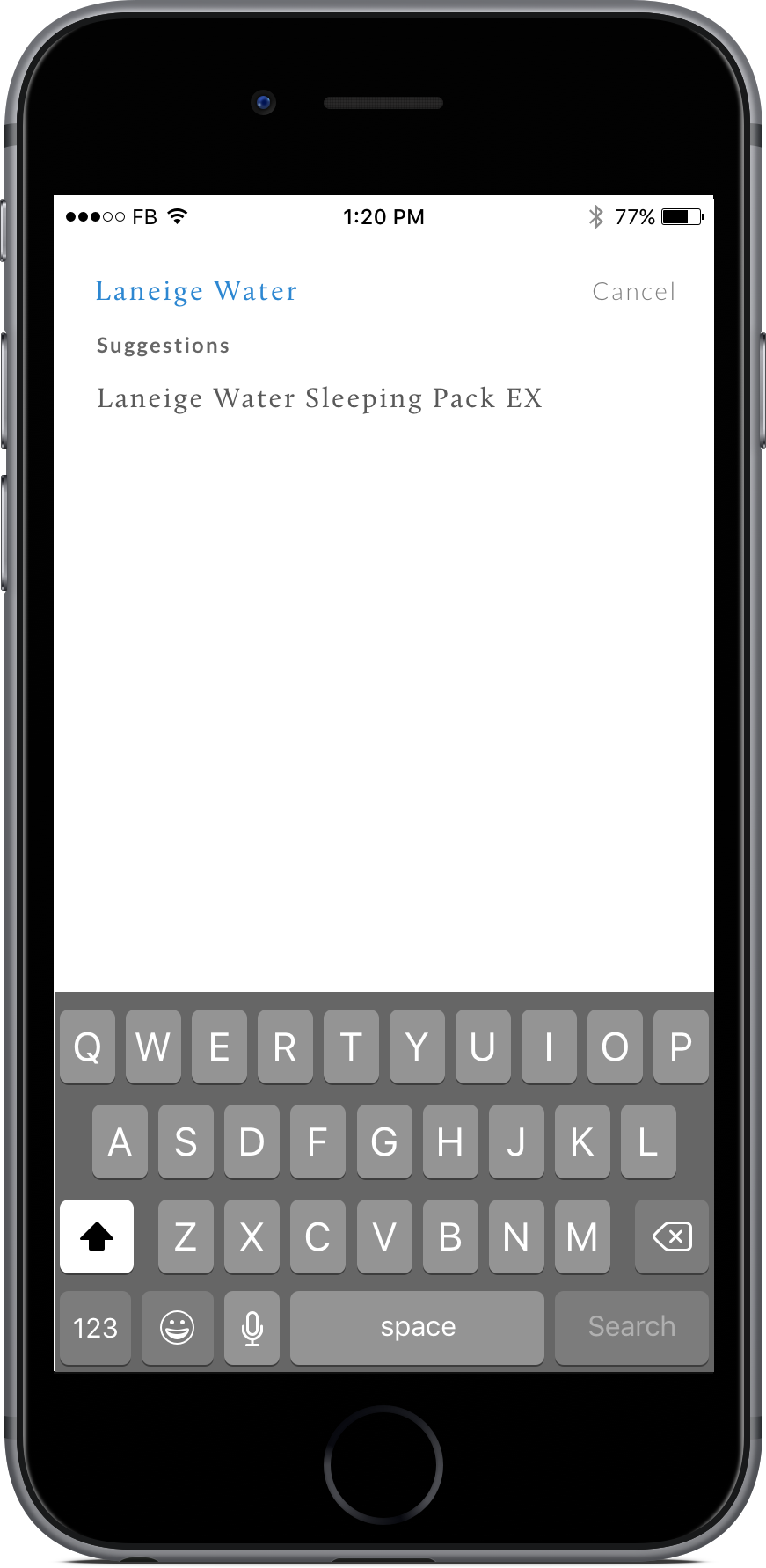
Here are examples of search results screens that give more detailed reviews.

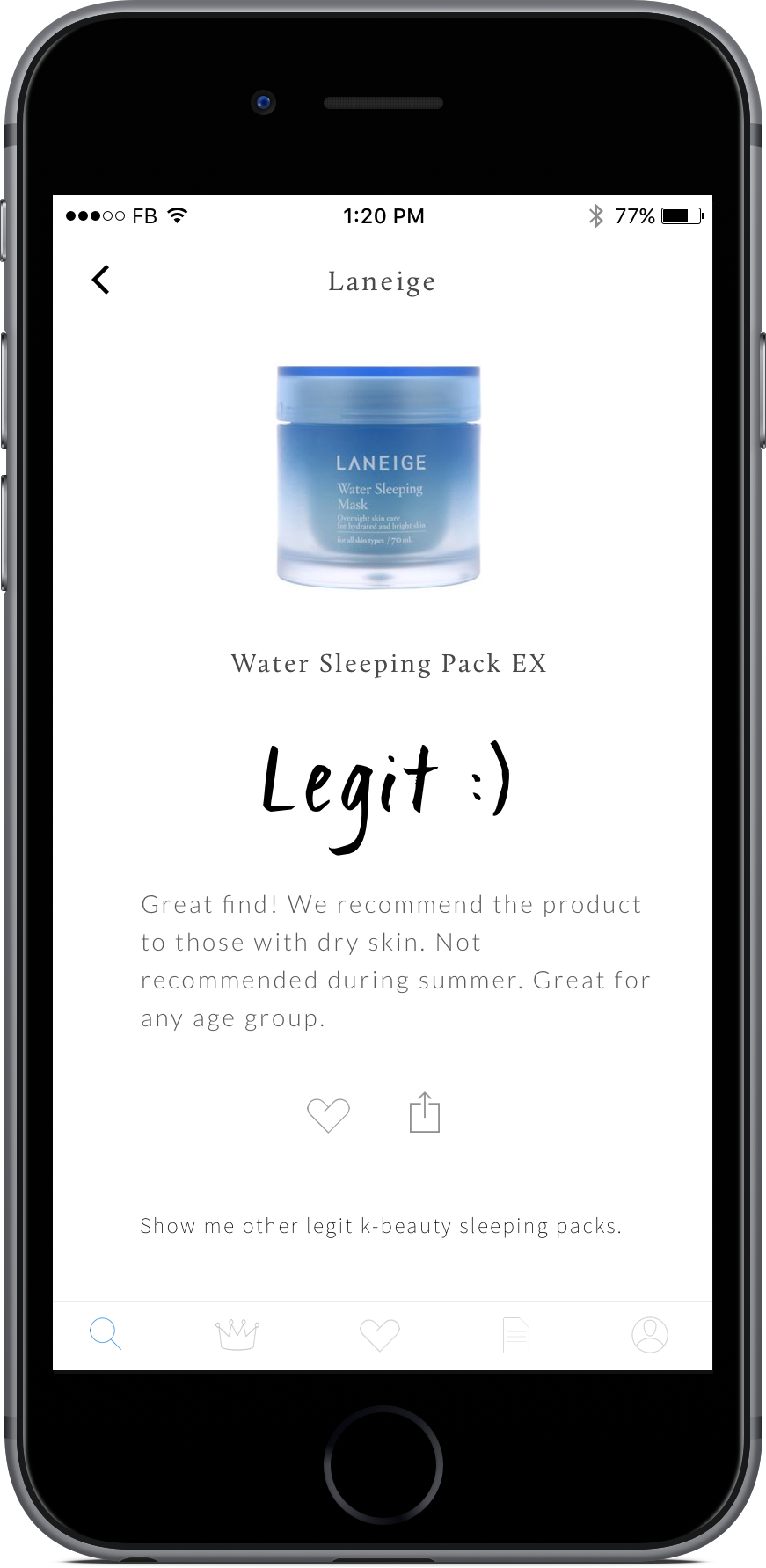

In addition, when users search for bestselling products, users can filter products based on their own needs.
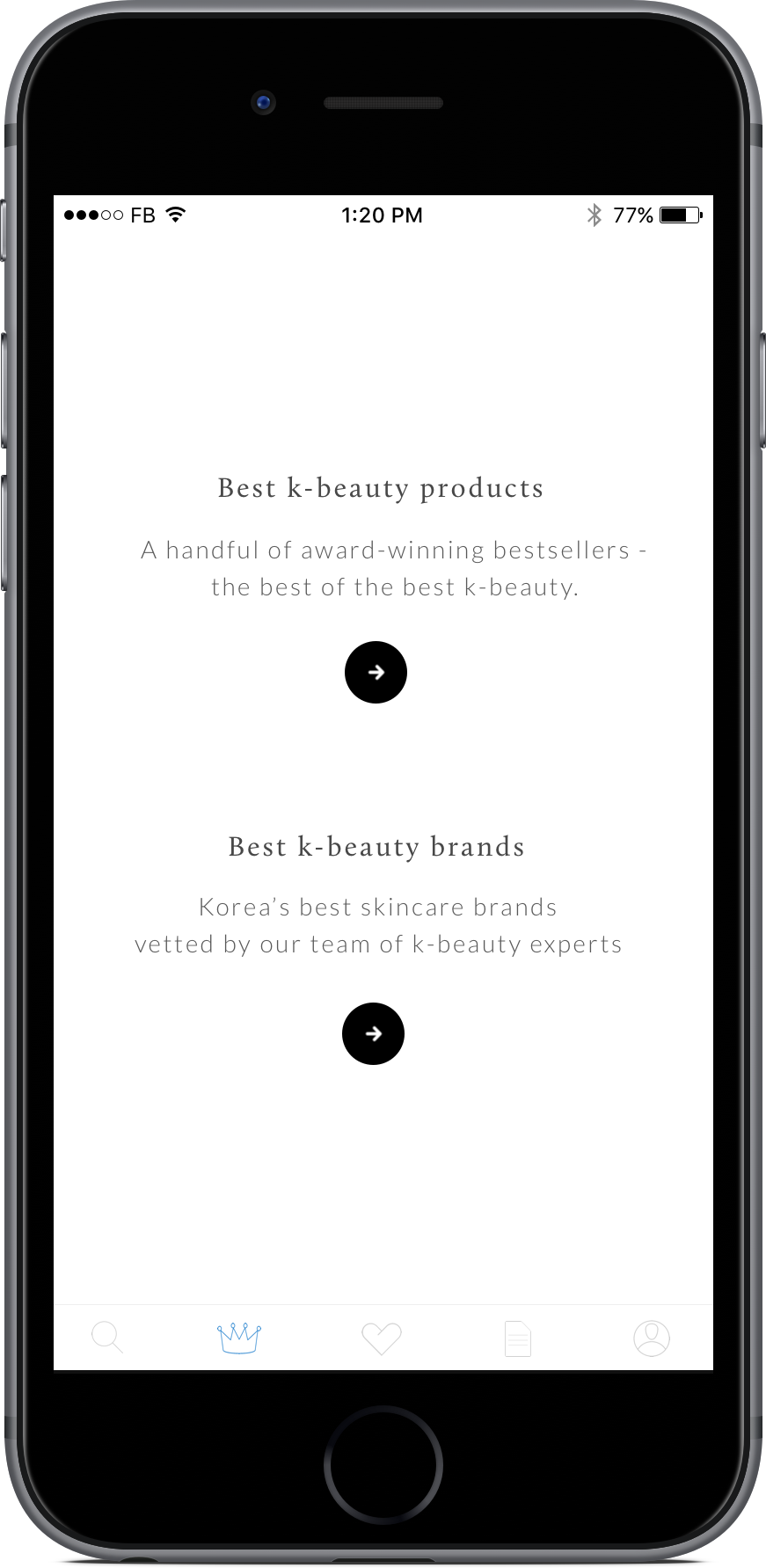


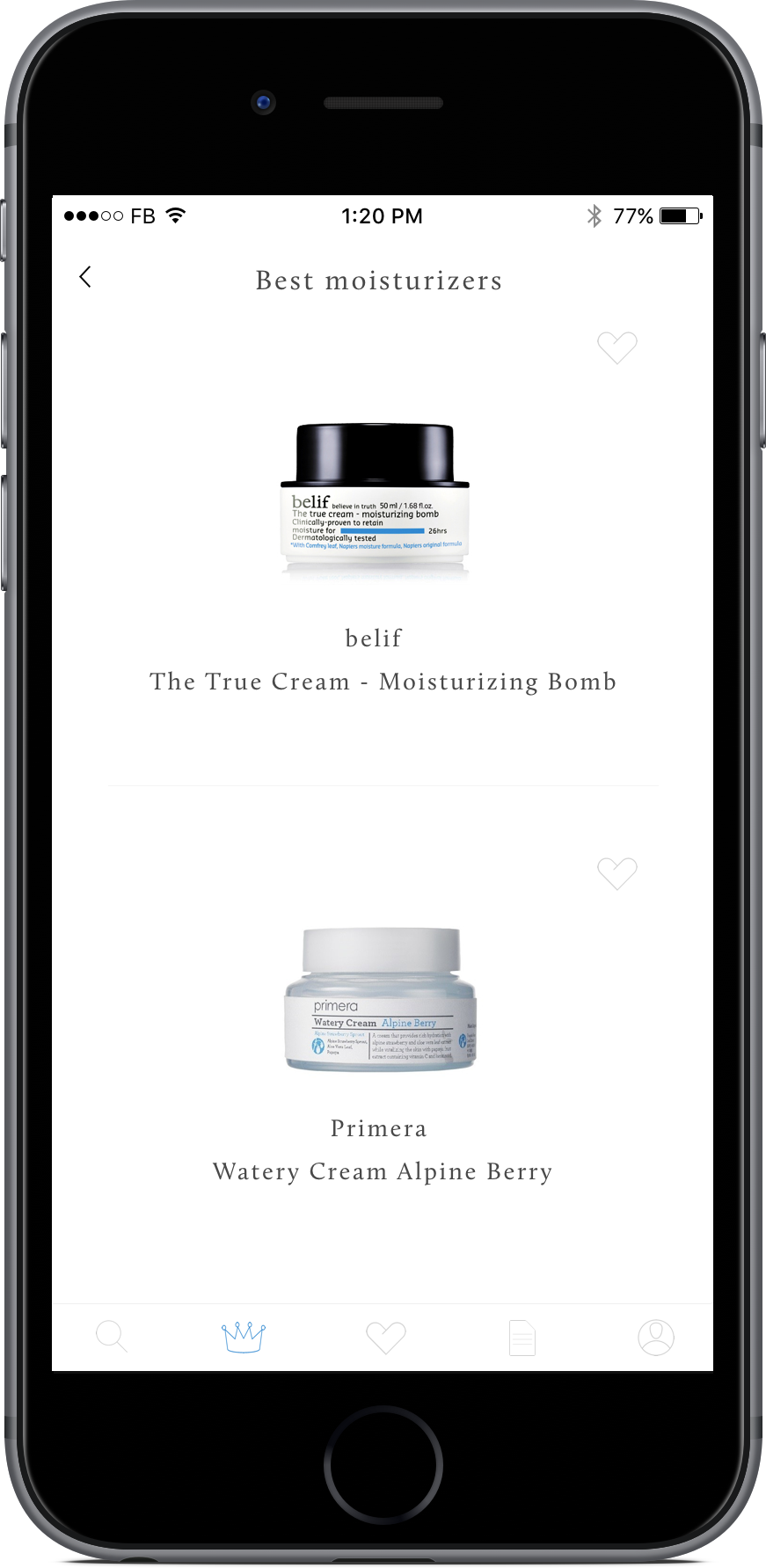
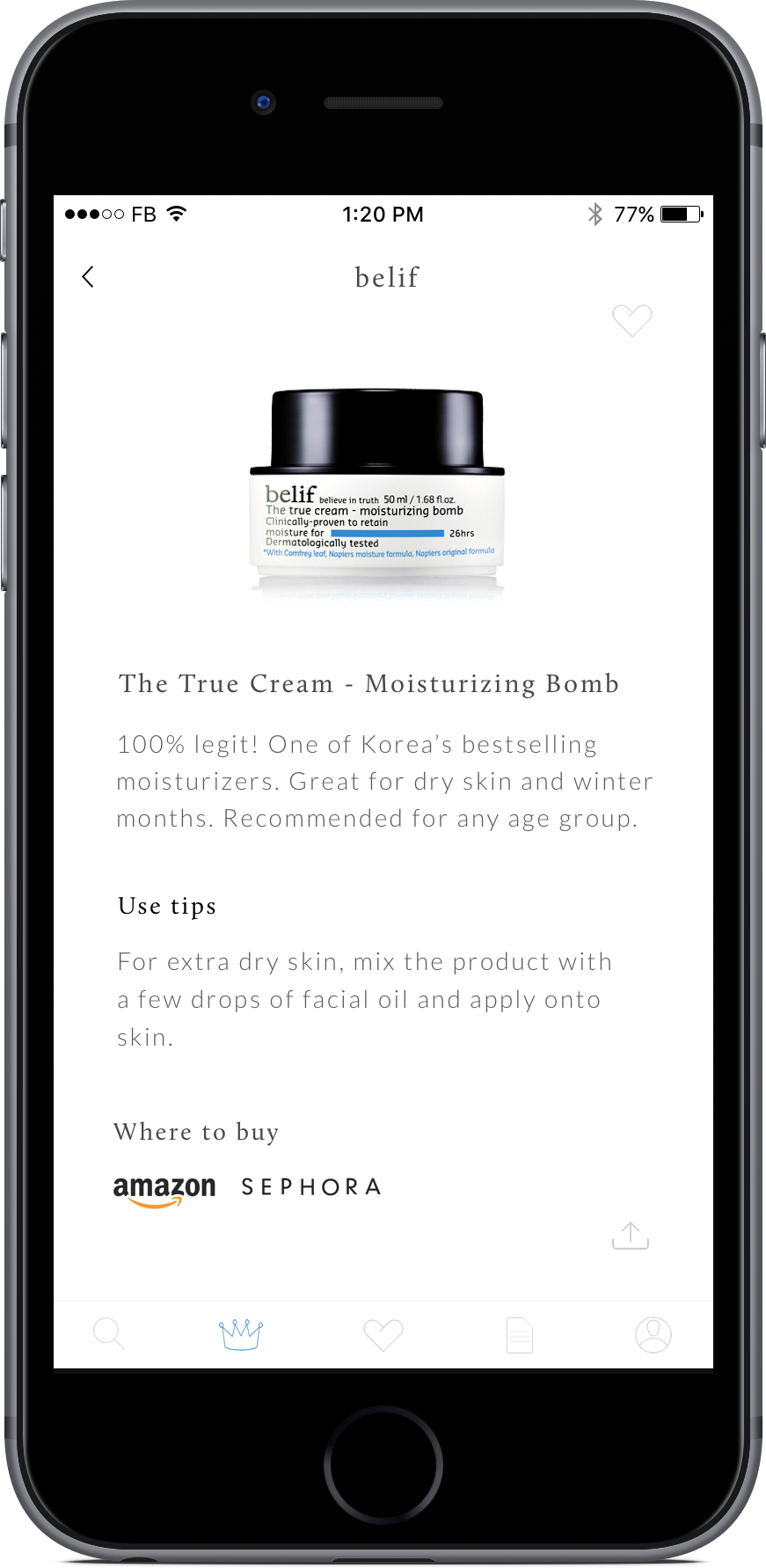
Insight 3: Users want help understanding k-beauty
“I was not used to "serum" or "skin milk" and had no idea how to use those” -- a friend on her experience shopping for k-beauty
Some users wanted a short k-beauty guide in a section somewhere. For example, a friend commented that she had no idea how to use “serum” or “skin milk” since she was not used to the terms and would appreciate help understanding the terms. I was initially hesitant to include an “K-beauty Cheat Sheet” -- I wanted the app to be simple and just serve the core functions. However, after talking to more potential users, I decided to include the cheat sheet because it has a lot benefit to users, most of whom are not yet familiar with k-beauty. While users can also research the terms elsewhere, the Cheat Sheet allows users to better understand products without leaving the app.
“I like the cheat sheet since it is an emerging market and all of the different terms are overwhelming.”
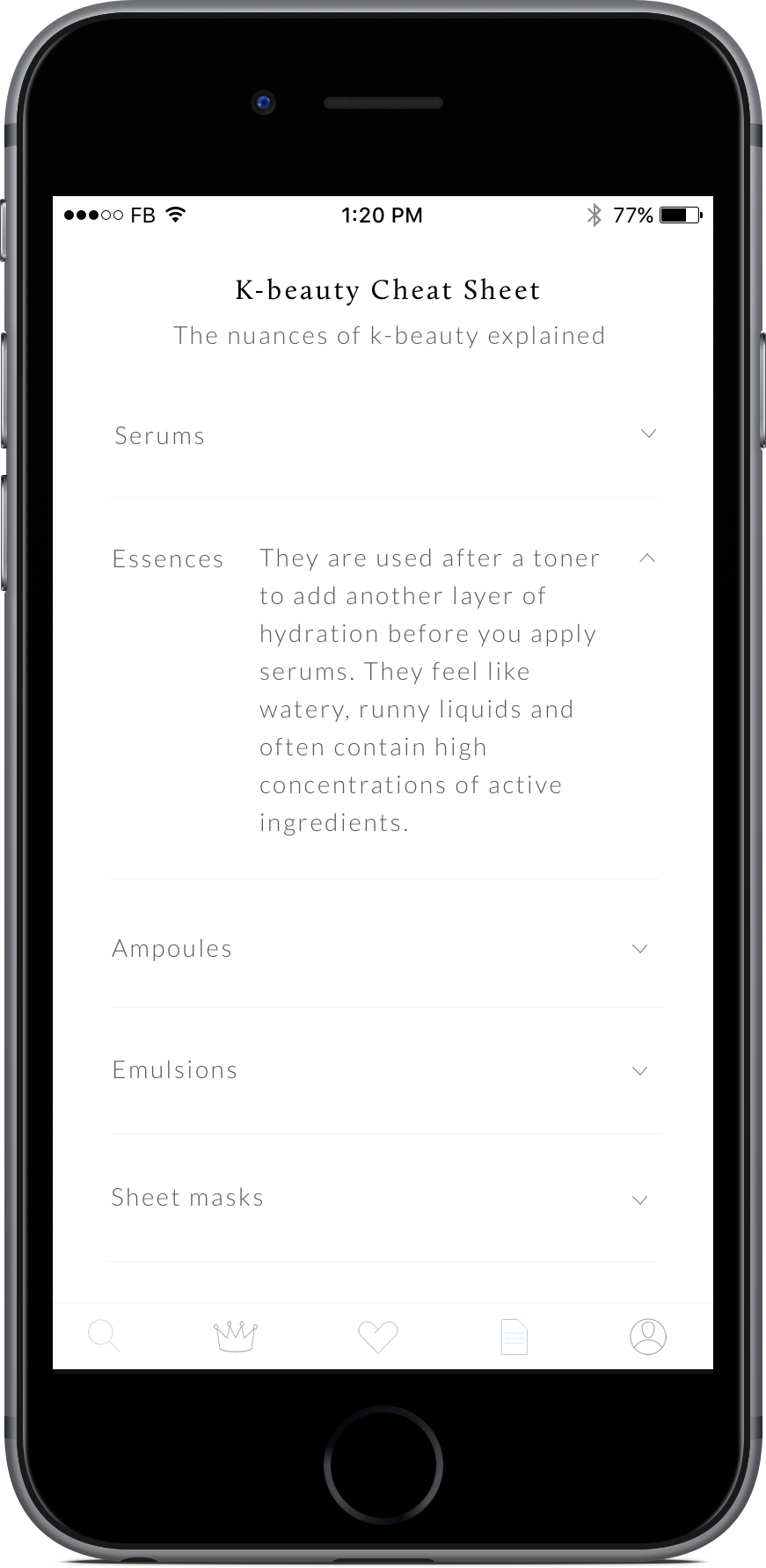
K-beauty Cheat Sheet screen from the final design
Final Design
Here's the invision prototype that showcases the final design.
The final product concept allows users to search for a specific product or brand and find out 1) whether it’s reputable or not 2) whether it’s recommended for them. Ratings are based on reviews aggregated from Korea's major cosmetics review sites.
In addition, the product lets users discover Korea’s best products and makes customized recommendations. Finally, the product also lets users discover Korea’s best brands.

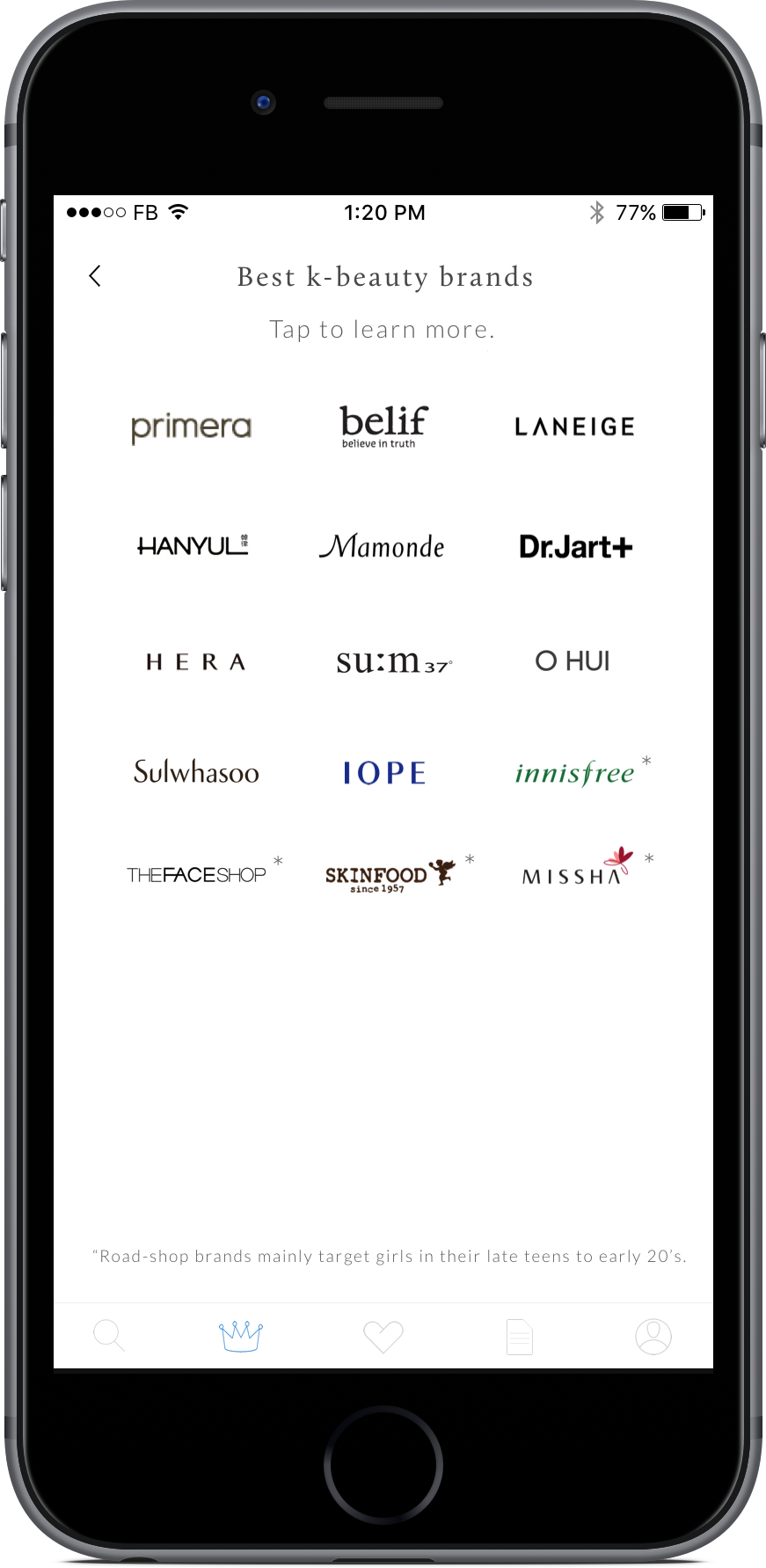
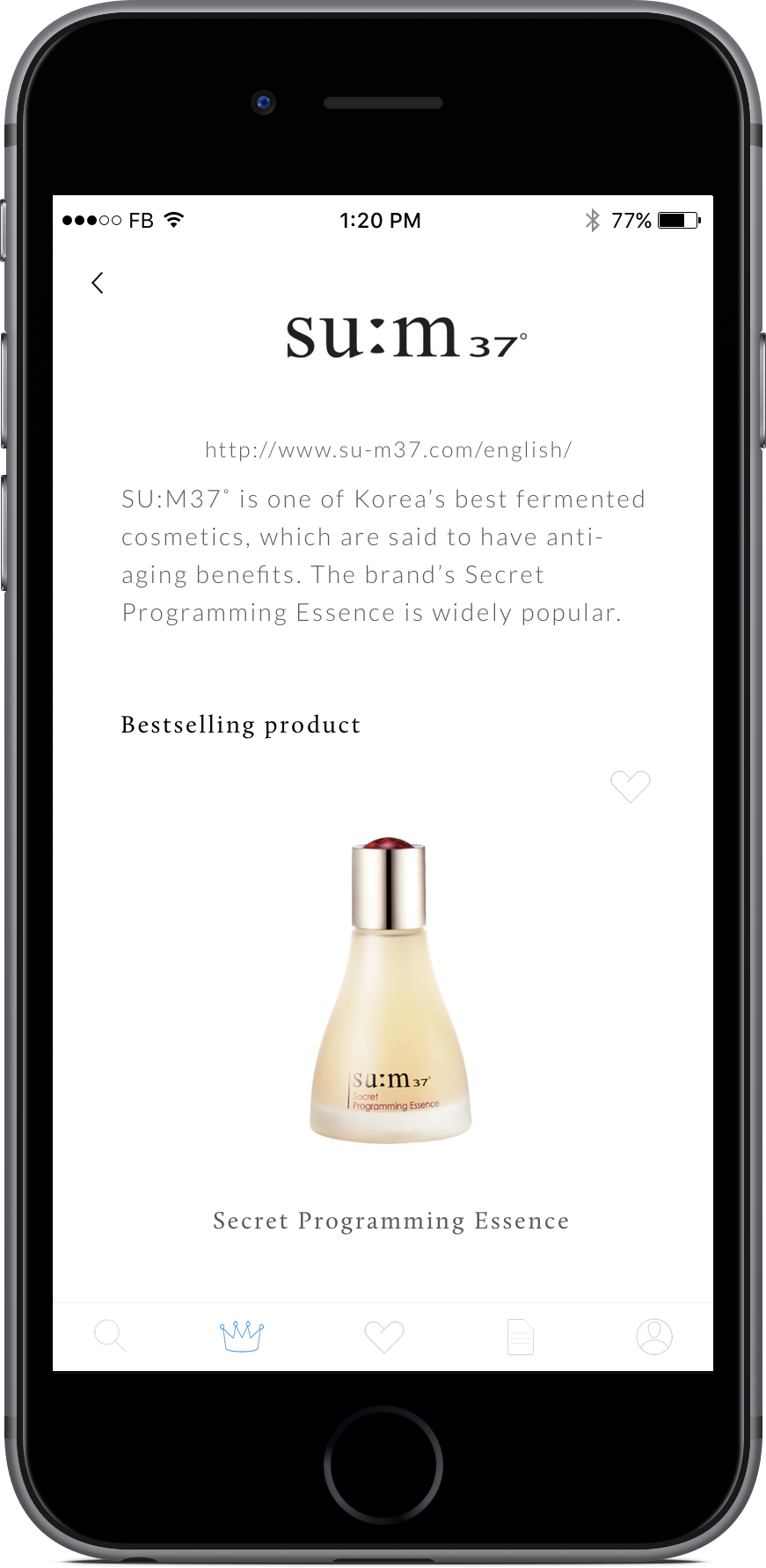
What I’ve learned
I’ve gathered tremendous insights from talking to users. I had made assumptions about their mental models (e.g. what makes a credible rating system to users), and the assumptions were proved wrong.
Designers often design products where they are not target users. The project has helped me learn to try and think from users’ perspectives and truly design for users.